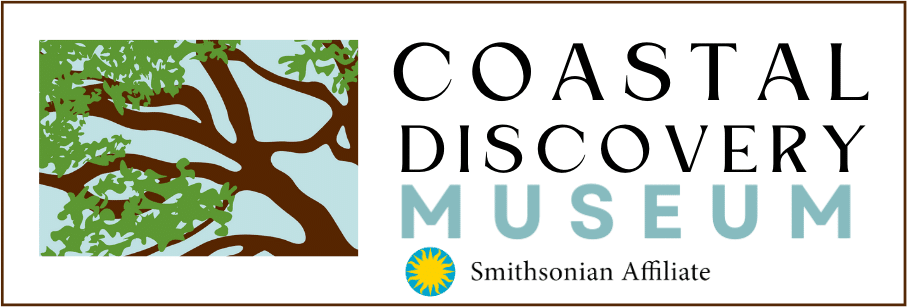Majestic Honey Horn: Explore at Your Own Pace
Honey Horn is more than a scenic backdrop—it’s a living piece of Lowcountry history. Wander nature trails shaded by ancient live oaks, pause by the dragonfly pond, or visit the butterfly habitat. The grounds include a historic horse barn and hay barn, wooden boardwalks leading into the Jarvis Creek salt marsh, and a renowned Camellia Garden alongside other specialty plantings.
The site’s historic buildings and natural landscapes offer a quiet space to learn, observe, and connect with the region’s rich history, wildlife, and culture. Whether you're here for a stroll, a guided tour, or a special event, Honey Horn invites you to explore.
Honey Horn Map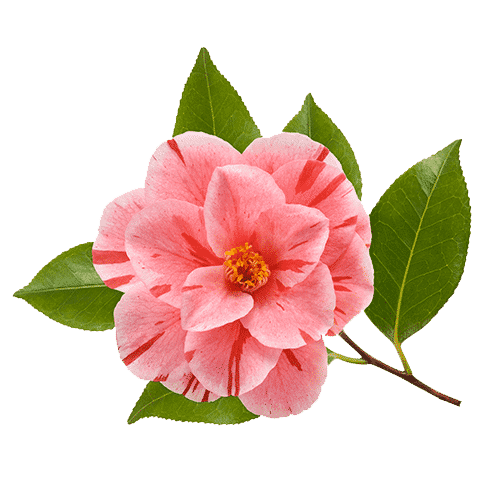
Majestic Honey Horn: Explore at Your Own Pace
Honey Horn is more than a scenic backdrop—it’s a living piece of Lowcountry history. Wander nature trails shaded by ancient live oaks, pause by the dragonfly pond, or visit the butterfly habitat. The grounds include a historic horse barn and hay barn, wooden boardwalks leading into the Jarvis Creek salt marsh, and a renowned Camellia Garden alongside other specialty plantings.
The site’s historic buildings and natural landscapes offer a quiet space to learn, observe, and connect with the region’s rich history, wildlife, and culture. Whether you're here for a stroll, a guided tour, or a special event, Honey Horn invites you to explore.
Honey Horn Map
BE IN THE KNOW
MARY ANN PEEPLES
PAVILION
This structure, built in 2006, is named after an ardent Museum supporter who helped raise the initial capital funds to renovate and develop Honey Horn as you see it today. The Pavilion is a popular and picturesque site for Hilton Head Island activities at the Coastal Discovery Museum including special events, school and public programming, private parties, and weddings. (Get hitched to your honey at Honey Horn!) The Pavilion is surrounded by some of the most majestic live oaks on the property and furnished with a number of picnic tables creating a scene of endless southern charm.
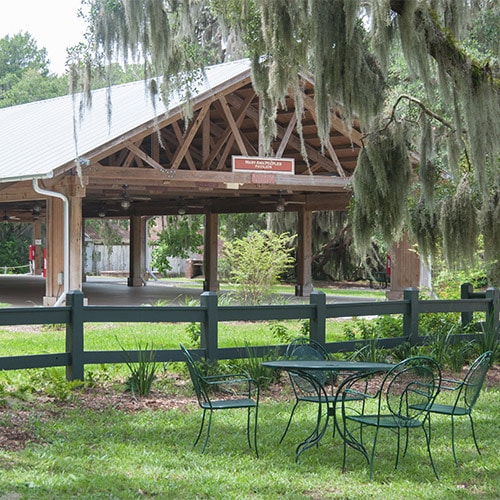
MARY ANN PEEPLES
PAVILIONThis structure, built in 2006, is named after an ardent Museum supporter who helped raise the initial capital funds to renovate and develop Honey Horn as you see it today. The Pavilion is a popular and picturesque site for Hilton Head Island activities at the Coastal Discovery Museum including special events, school and public programming, private parties, and weddings. (Get hitched to your honey at Honey Horn!) The Pavilion is surrounded by some of the most majestic live oaks on the property and furnished with a number of picnic tables creating a scene of endless southern charm.

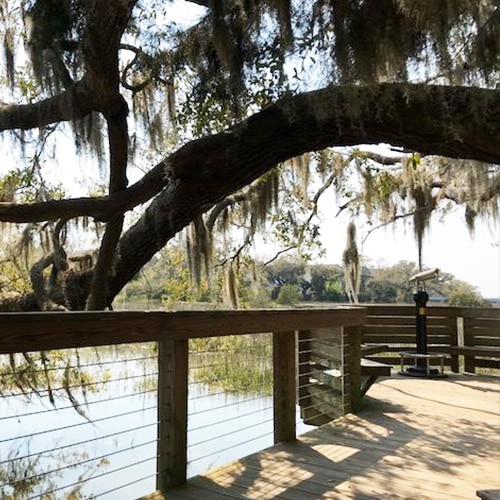
MARSH
FRONT BOARDWALKS
Extending into Jarvis Creek run the museum’s three educational boardwalks, positioned for exploring the tidal creek that borders the museum’s property. These boardwalks and trails are lined with informative interpretive panels on the natural and cultural features of the waterways, estuaries, salt marshes found on and around Hilton Head Island, as well as the abundant marine and wildlife that inhabit them.
MARSH
FRONT BOARDWALKSExtending into Jarvis Creek run the museum’s three educational boardwalks, positioned for exploring the tidal creek that borders the museum’s property. These boardwalks and trails are lined with informative interpretive panels on the natural and cultural features of the waterways, estuaries, salt marshes found on and around Hilton Head Island, as well as the abundant marine and wildlife that inhabit them.

KAREN WERTHEIMER
BUTTERFLY HABITAT
Populated with native butterflies and flora, a visit to the Karen Wertheimer Butterfly Habitat is a favorite local Hilton Head Island activity. This greenhouse garden and butterfly exhibit is filled with nectar plants to feed the butterflies as well as host plants where butterflies lay their eggs and caterpillars feed. Informational panels throughout the enclosure enhance the visitor experience, detailing the natural history of these insects and explaining how to attract them to your yard. Visitors learn about the four stages of the butterfly’s life cycle from eggs, caterpillars, and chrysalises, to adults. Guided tours of the butterfly enclosure are offered throughout butterfly season (May through October). LEARN MORE about the butterflies in our habitat here.
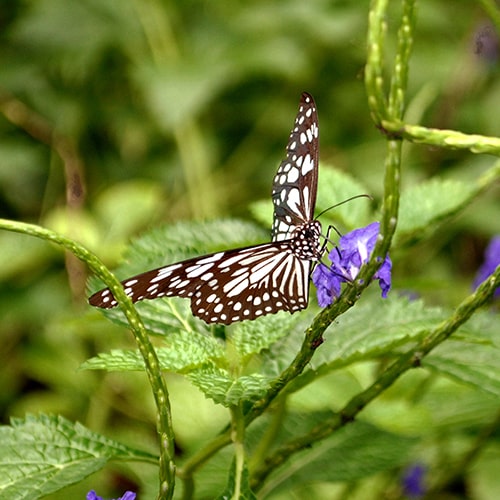
KAREN WERTHEIMER
BUTTERFLY HABITAT
Populated with native butterflies and flora, a visit to the Karen Wertheimer Butterfly Habitat is a favorite local Hilton Head Island activity. This greenhouse garden and butterfly exhibit is filled with nectar plants to feed the butterflies as well as host plants where butterflies lay their eggs and caterpillars feed. Informational panels throughout the enclosure enhance the visitor experience, detailing the natural history of these insects and explaining how to attract them to your yard. Visitors learn about the four stages of the butterfly’s life cycle from eggs, caterpillars, and chrysalises, to adults. Guided tours of the butterfly enclosure are offered throughout butterfly season (May through October). LEARN MORE about the butterflies in our habitat here.

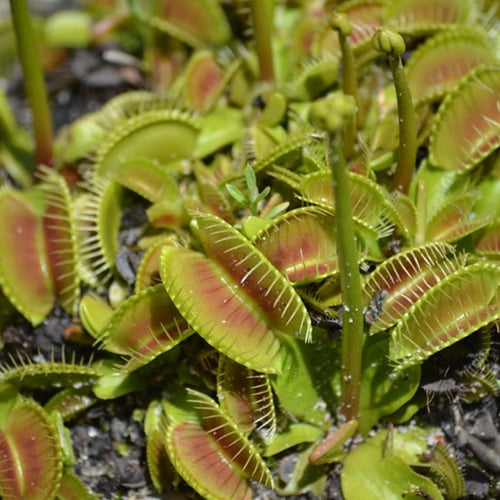
CARNIVOROUS
PLANTS BOG GARDEN
Did you know that the Venus Fly Trap is a native plant to South Carolina? For the more adventurous at heart, you can learn all about insect-eating plants with a visit to the Museum’s Carnivorous Plant Bog Garden. The Garden displays three different kinds of carnivorous plants found in the Lowcountry, including Venus, Sundews, and several species of Pitcher plants, each with their own unique method of trapping insects. Along with a visit to the Camellia Garden, this unique attraction should top your list of Hilton Head Island learning experiences.
CARNIVOROUS
PLANTS BOG GARDEN
Did you know that the Venus Fly Trap is a native plant to South Carolina? For the more adventurous at heart, you can learn all about insect-eating plants with a visit to the Museum’s Carnivorous Plant Bog Garden. The Garden displays three different kinds of carnivorous plants found in the Lowcountry, including Venus, Sundews, and several species of Pitcher plants, each with their own unique method of trapping insects. Along with a visit to the Camellia Garden, this unique attraction should top your list of Hilton Head Island learning experiences.

OUTDOOR SCULPTURES
AND MURALS
The Bird's Eye View Theater is the site of public programs that the Museum offers on a year-round basis. Its designer/artist Walter Palmer is a well-known artisan whose bronze sculptures grace the tops of fountains, pools, and other public spaces throughout the Lowcountry. The theater seats 30, in seating designed to emulate cresting ocean waves.
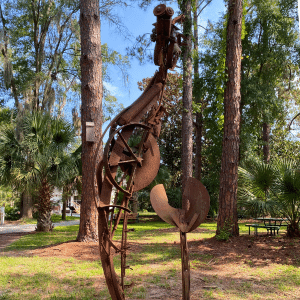
OUTDOOR SCULPTURES
AND MURALS
The Bird's Eye View Theater is the site of public programs that the Museum offers on a year-round basis. Its designer/artist Walter Palmer is a well-known artisan whose bronze sculptures grace the tops of fountains, pools, and other public spaces throughout the Lowcountry. The theater seats 30, in seating designed to emulate cresting ocean waves.

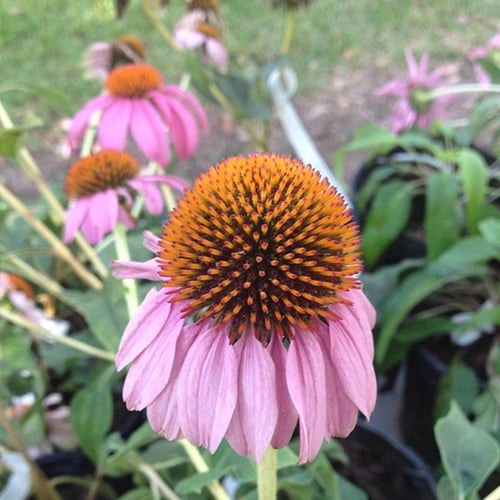
HERITAGE
GARDEN
The Coastal Discovery Museum’s Heritage Garden features more than 30 plant species that have historical relevance to the Lowcountry. From plants used by local Native American populations, to crops grown by Gullah islanders after the Civil War, this garden is brimming with historical discovery of the plants that helped people survive in the coastal environment of the barrier islands. If you love gardens or history, this should be on your list of things to do on Hilton Head Island.
HERITAGE
GARDENThe Coastal Discovery Museum’s Heritage Garden features more than 30 plant species that have historical relevance to the Lowcountry. From plants used by local Native American populations, to crops grown by Gullah islanders after the Civil War, this garden is brimming with historical discovery of the plants that helped people survive in the coastal environment of the barrier islands. If you love gardens or history, this should be on your list of things to do on Hilton Head Island.

SPECIMEN TREES
AT HONEY HORN
Honey Horn is home to a former state champion Southern Red Cedar tree, one of the largest of its kind in South Carolina and with germination estimated at 1595 – dating back more than 400 years. That crown jewel is joined by a variety of massive live oaks spread throughout the property, many of which were planted in the early 1800s. Species like Bald Cypress, Dogwood, Ginkgo, and Southern Magnolia were planted by previous owners for mostly decorative purposes. Discover other species across the vast 68-acres and learn more about unique varieties like toothache trees, loblolly pines, hackberry and more. Many trees on site have interpretive panels identifying species and providing historic or biological information.
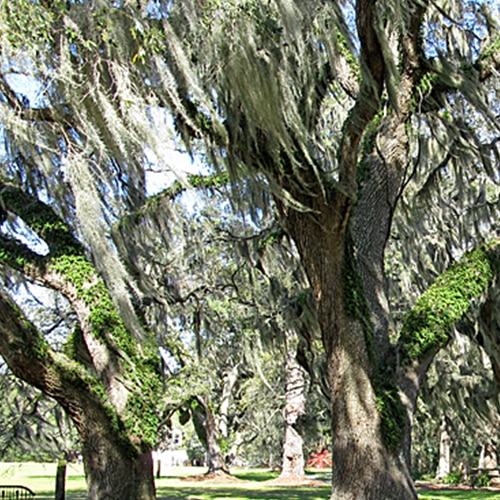
SPECIMEN TREES
AT HONEY HORN
Honey Horn is home to a former state champion Southern Red Cedar tree, one of the largest of its kind in South Carolina and with germination estimated at 1595 – dating back more than 400 years. That crown jewel is joined by a variety of massive live oaks spread throughout the property, many of which were planted in the early 1800s. Species like Bald Cypress, Dogwood, Ginkgo, and Southern Magnolia were planted by previous owners for mostly decorative purposes. Discover other species across the vast 68-acres and learn more about unique varieties like toothache trees, loblolly pines, hackberry and more. Many trees on site have interpretive panels identifying species and providing historic or biological information.

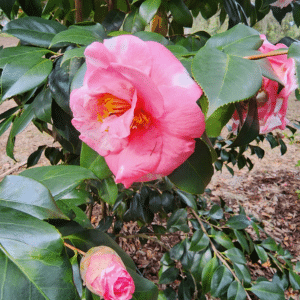
CAMELLIA
GARDEN
The Manske Camellia Garden at Honey Horn, home to more than 135 camellia varieties, was funded, designed, and created by longtime museum benefactors Fred and Donna Manske.
A close relative of the tea plant, camellias originated in Asia. Each plant is labeled and includes a photo of its bloom. As Hilton Head’s only public camellia garden, it is part of the American Camellia Society’s Camellia Trail. The best time to see these winter blooms is from October through March.
CAMELLIA
GARDEN
The Manske Camellia Garden at Honey Horn, home to more than 135 camellia varieties, was funded, designed, and created by longtime museum benefactors Fred and Donna Manske.
A close relative of the tea plant, camellias originated in Asia. Each plant is labeled and includes a photo of its bloom. As Hilton Head’s only public camellia garden, it is part of the American Camellia Society’s Camellia Trail. The best time to see these winter blooms is from October through March.

NAN LLOYD
NATURE TRAIL
This rustic trail begins at the Hay Barn. Visitors can now continue walking through the forest, across the large open field, and then back along the marsh. This trail was designed to lead you off the beaten path and through some of the most beautiful live oaks on our property. More importantly, you can see nature up-close as you explore some of the more hidden parts of Historic Honey Horn. (Trail distance is .6 miles.)
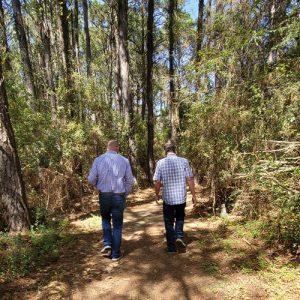
NAN LLOYD
NATURE TRAIL
This rustic trail begins at the Hay Barn. Visitors can now continue walking through the forest, across the large open field, and then back along the marsh. This trail was designed to lead you off the beaten path and through some of the most beautiful live oaks on our property. More importantly, you can see nature up-close as you explore some of the more hidden parts of Historic Honey Horn. (Trail distance is .6 miles.)

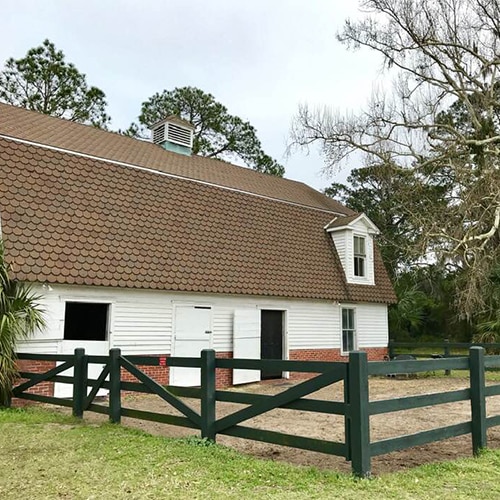
HORSE
BARN
The Horse Barn is one of many buildings added in the 1930s by Honey Horn owners Landon K. Thorne and Alfred Lee Loomis. In 2010, two years after being renovated by the Coastal Discovery Museum, the Horse Barn became the onsite stable for marsh tacky horses – South Carolina's state heritage horse.
The museum is honored to have been the home of Comet, a beloved marsh tacky, who passed away in 2023, and his companion Hawk, a quarter horse, who spent 9 years at Honey Horn before returning to Heroes on Horseback, a therapeutic riding program, in 2025 to spend his sunset years.
HORSE
BARN
The Horse Barn is one of many buildings added in the 1930s by Honey Horn owners Landon K. Thorne and Alfred Lee Loomis. In 2010, two years after being renovated by the Coastal Discovery Museum, the Horse Barn became the onsite stable for marsh tacky horses – South Carolina's state heritage horse.
The museum is honored to have been the home of Comet, a beloved marsh tacky, who passed away in 2023, and his companion Hawk, a quarter horse, who spent 9 years at Honey Horn before returning to Heroes on Horseback, a therapeutic riding program, in 2025 to spend his sunset years.

